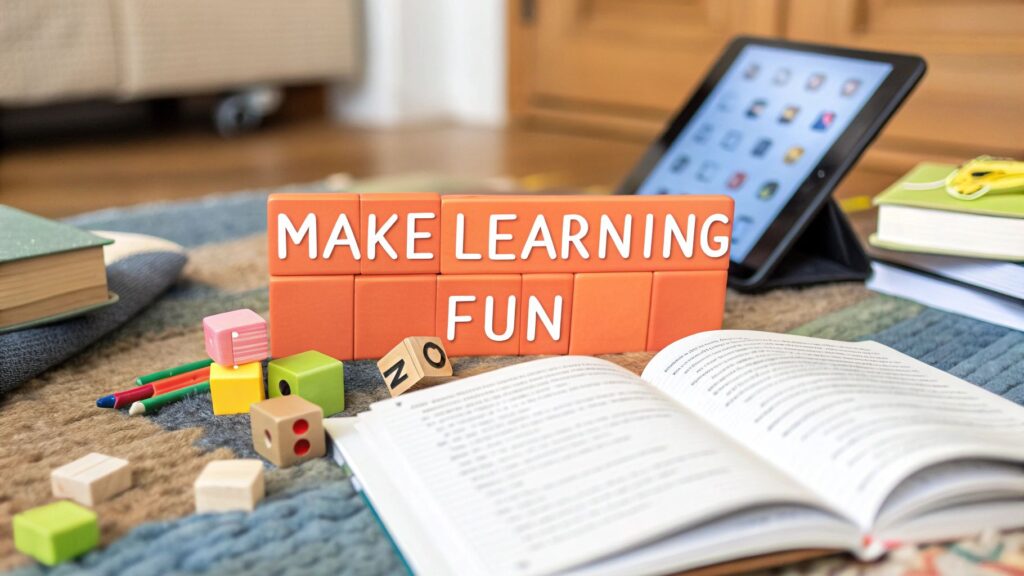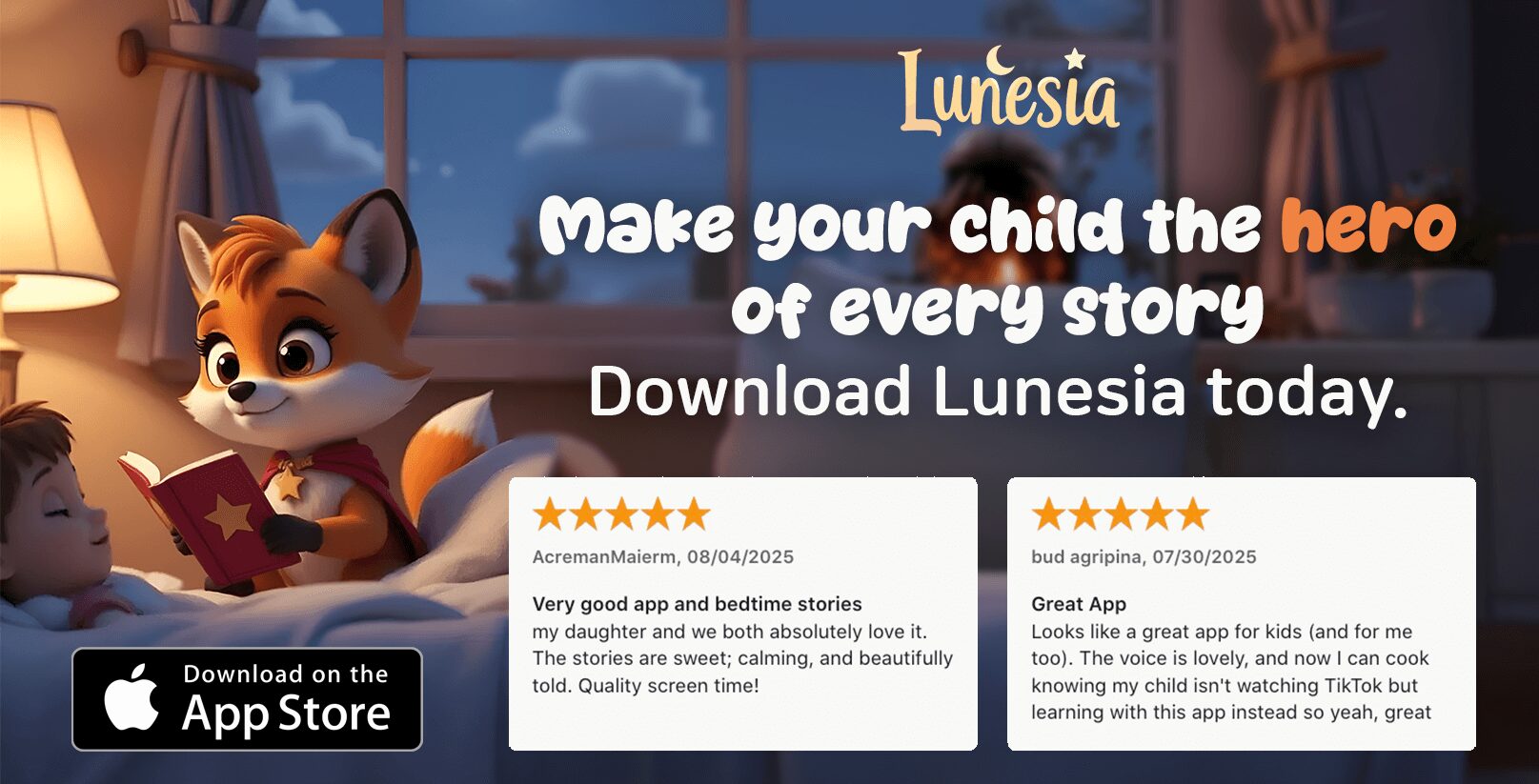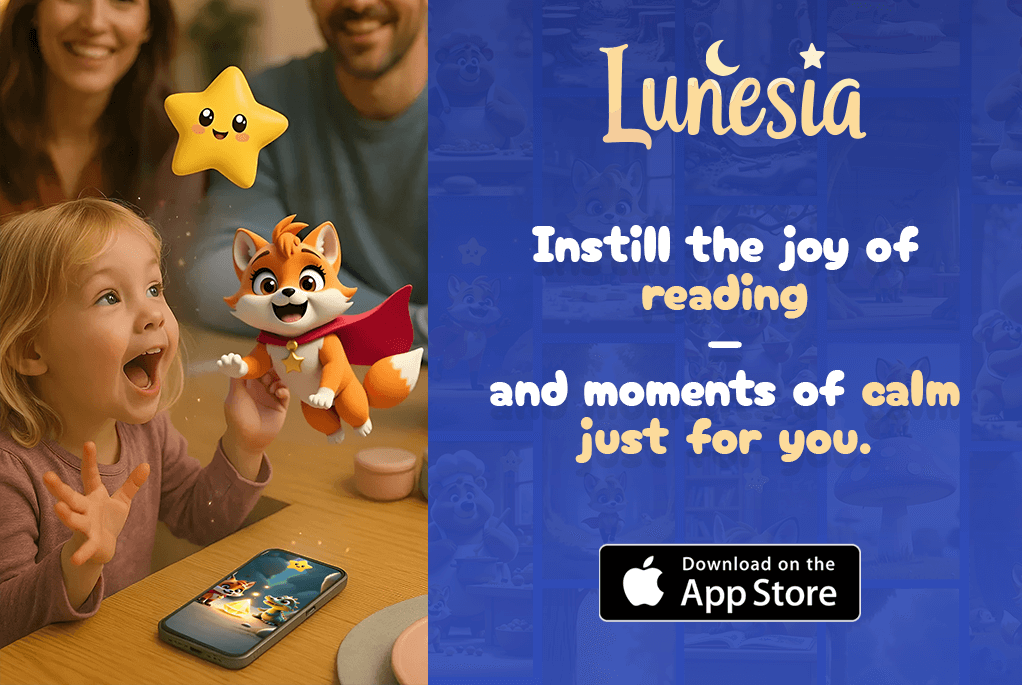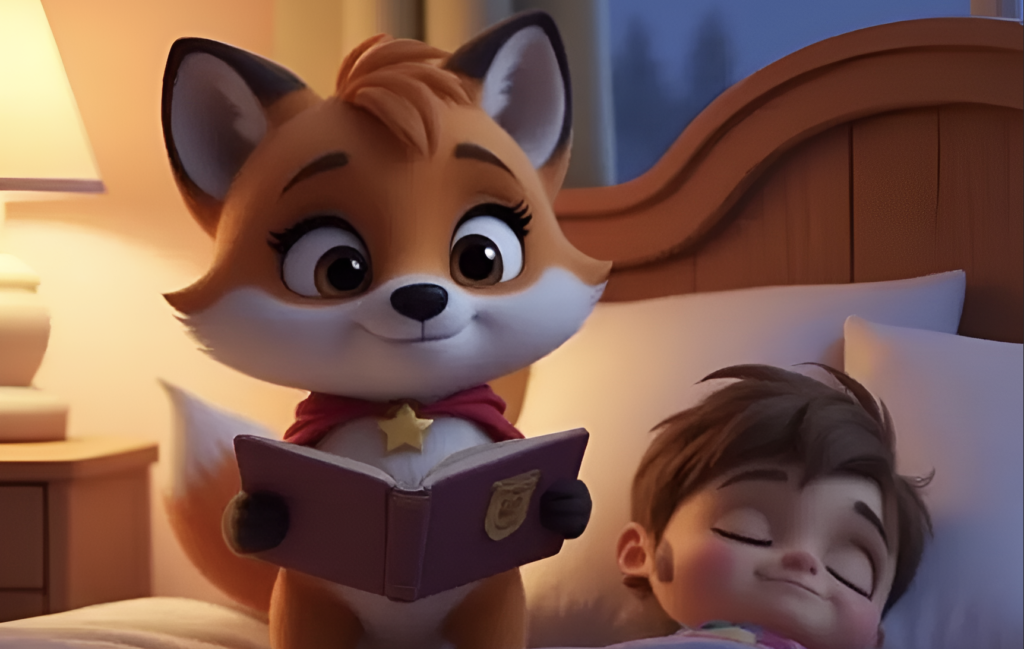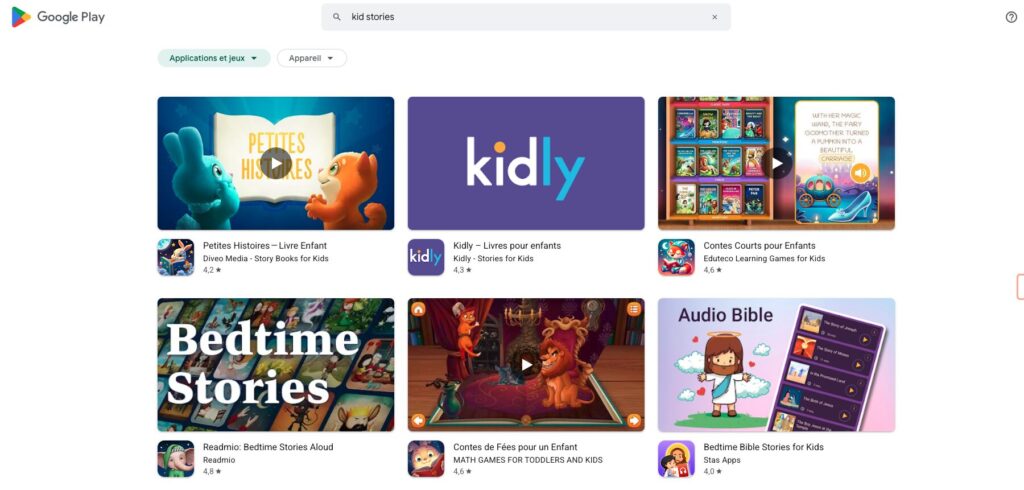Ever find yourself in that daily tug-of-war, trying to get your 3-year-old to practice their letters, only to be met with a firm "no" and a tantrum on the horizon? You are so far from alone.
Many of us feel that intense pressure to turn our homes into mini-classrooms, but what if I told you a secret that could change everything? That approach often backfires. The real magic isn’t in forcing flashcards; it’s in transforming learning into an irresistible adventure.
End the Learning Battles and Start Having Fun
What if counting wasn't about numbers on a page but about how many red cars you can spot on the way to the park? And what if learning about kindness wasn't a lecture, but a choice your child gets to make in a story to help a shy dragon find its roar?
When you shift from pressure to play, learning becomes a delightful discovery, not a dreaded duty.
This simple visual flow shows how to move from struggle to success.
This process reveals a powerful truth: when learning feels like a game, children absorb skills effortlessly because they are genuinely, joyfully engaged.
The Power of Play-Based Learning
Did you know that a staggering 90% of brain development happens before the age of five? And what’s the primary engine driving all that incredible growth? It's play.
Play isn't just a break from learning; it is the most powerful form of learning there is. When children are playing, they're developing critical thinking, social skills, and emotional regulation all at once.
But let's be real—life is busy. How do you find the time and energy to turn every moment into a game?
This is where transforming everyday tasks can make a huge difference. You don't need to invent new activities from scratch; you just need to reframe the ones you're already doing.
Quick Swaps from Chore to Play
Ready to turn daily friction into moments of connection? Here’s how.
| Everyday Task | The Old Way (A Chore) | The Fun Way (A Game) |
|---|---|---|
| Cleaning Up Toys | "Put your blocks away now." | "Let's see who can be the fastest toy robot! I bet I can put away 5 red blocks before you put away 5 blue ones!" |
| Setting the Table | "It's time to set the table." | "You're the head chef's assistant! Can you solve the puzzle and put one fork at each placemat?" |
| Getting Dressed | "Hurry up and get your socks on." | "The Silly Sock Race is on! Who can get their socks on their feet before I count to 10?" |
| Brushing Teeth | "Go brush your teeth." | "Let's be 'Sugar Bug Busters'! We have two minutes to brush away all the sneaky sugar bugs." |
These small shifts can turn a potential battle into a moment of fun, embedding learning right into your family’s rhythm.
Want a little help from the right tools? Imagine your child exploring a story where their decisions shape the outcome, teaching them empathy and problem-solving without them even realizing it.
This is the core idea behind Lunesia—an app filled with interactive adventures that do the creative work for you. It turns screen time from a passive distraction into an active, value-rich journey where kids build courage, kindness, and problem-solving skills.
Instead of fighting over learning, you can hand them a safe, ad-free world where they become the hero. And the best part for you? While they're joyfully navigating a magical forest, you get a moment to breathe. It’s a guilt-free break, knowing they are not just occupied, but growing.
That's how to make learning fun for everyone.
Turn Your Home into a Playground for Learning
What if your living room could suddenly become a deep, mysterious jungle? Or a simple trip to the park could turn into a grand scientific expedition? The secret to making learning truly stick is to weave it so seamlessly into daily life that it feels less like a lesson and more like a magical adventure.
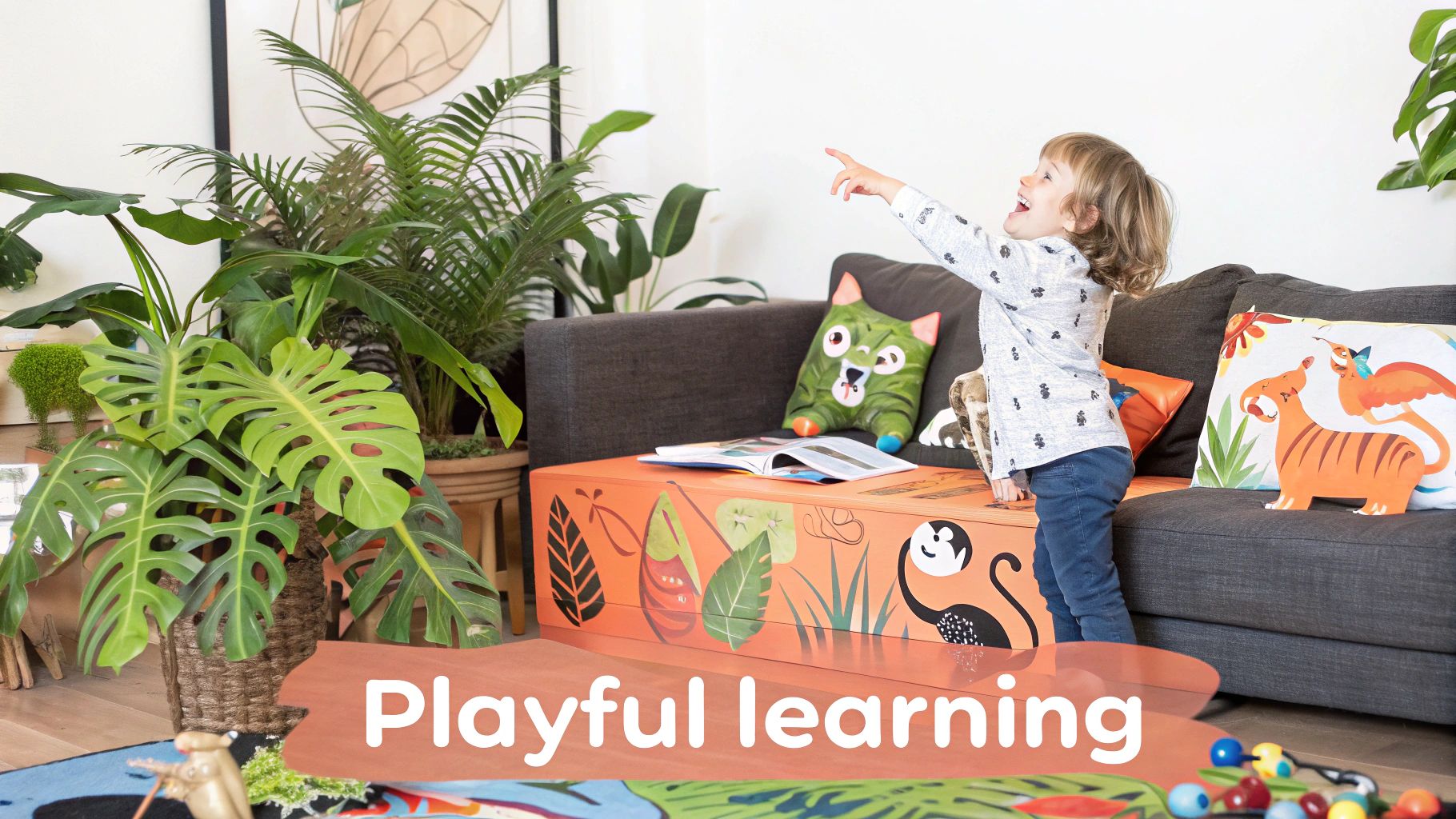
This isn’t about buying expensive toys or spending hours on complicated setups. It’s about a simple shift in mindset—one that taps directly into your child’s natural, boundless curiosity. Honestly, you already have everything you need to get started.
From the Kitchen to the Sidewalk
Think about your next walk around the block. Could it be more than just a walk? Absolutely. Turn it into a thrilling "Shape Hunt" by challenging your little one to spot circles on car wheels or squares in window panes. It’s a simple game that builds foundational geometry skills without a single worksheet in sight.
Dinner prep is another goldmine of hidden learning opportunities. Instead of just cooking, invite your child to be your official sous-chef.
- Counting: "Can you help me count three carrots for the soup?"
- Colors & Sorting: "Let's find all the green vegetables in the fridge!"
- Following Directions: "First, we wash the lettuce, then we put it in the bowl."
You're not just making a meal; you're building number sense, expanding vocabulary, and practicing how to follow a sequence—all while spending fantastic quality time together.
Even a chore like sorting laundry can become a vibrant color-matching game. Ask your child to make a pile of all the red socks or find every blue shirt. Suddenly, a mundane task is a playful challenge that reinforces color recognition. These small, consistent interactions are incredibly powerful. To take it even further, you could implement some creative DIY backyard playground ideas that turn your outdoor space into a hub for exploration.
When Big Feelings Get in the Way
But what happens when the fun grinds to a halt and a tantrum takes over? It’s a real and common worry—how do you keep things light and educational when your four-year-old is overwhelmed because their block tower keeps falling down?
This is where playful storytelling can become a parent’s secret weapon. Instead of lecturing about frustration, what if they could help a character in a story solve a very similar problem?
This is precisely why Lunesia’s interactive stories are so effective. A child might guide a little bear who is struggling to build a den, making choices that teach persistence and problem-solving. They are practicing emotional regulation in a safe, fictional world, which builds the exact skills they need for their real-world frustrations.
When your child is immersed in a Lunesia adventure—learning courage by helping a knight face a dragon or kindness by sharing with a lonely squirrel—you get a moment for yourself. It’s a guilt-free pause, knowing they are engaged in meaningful play that’s genuinely building their character. The true power of play is its ability to teach complex lessons through simple, joyful experiences.
By seeing your home as a canvas for discovery, you do so much more than just teach facts. You build a foundation for critical thinking, resilience, and a lifelong love of learning, proving that the most profound lessons are often found in the most playful moments.
Unlock the Power of Interactive Storytelling
Think back to the stories you loved as a child. Weren’t they entire worlds you could step into, where anything felt possible? Now, imagine if your child could do more than just listen—what if they could actually shape the adventure?
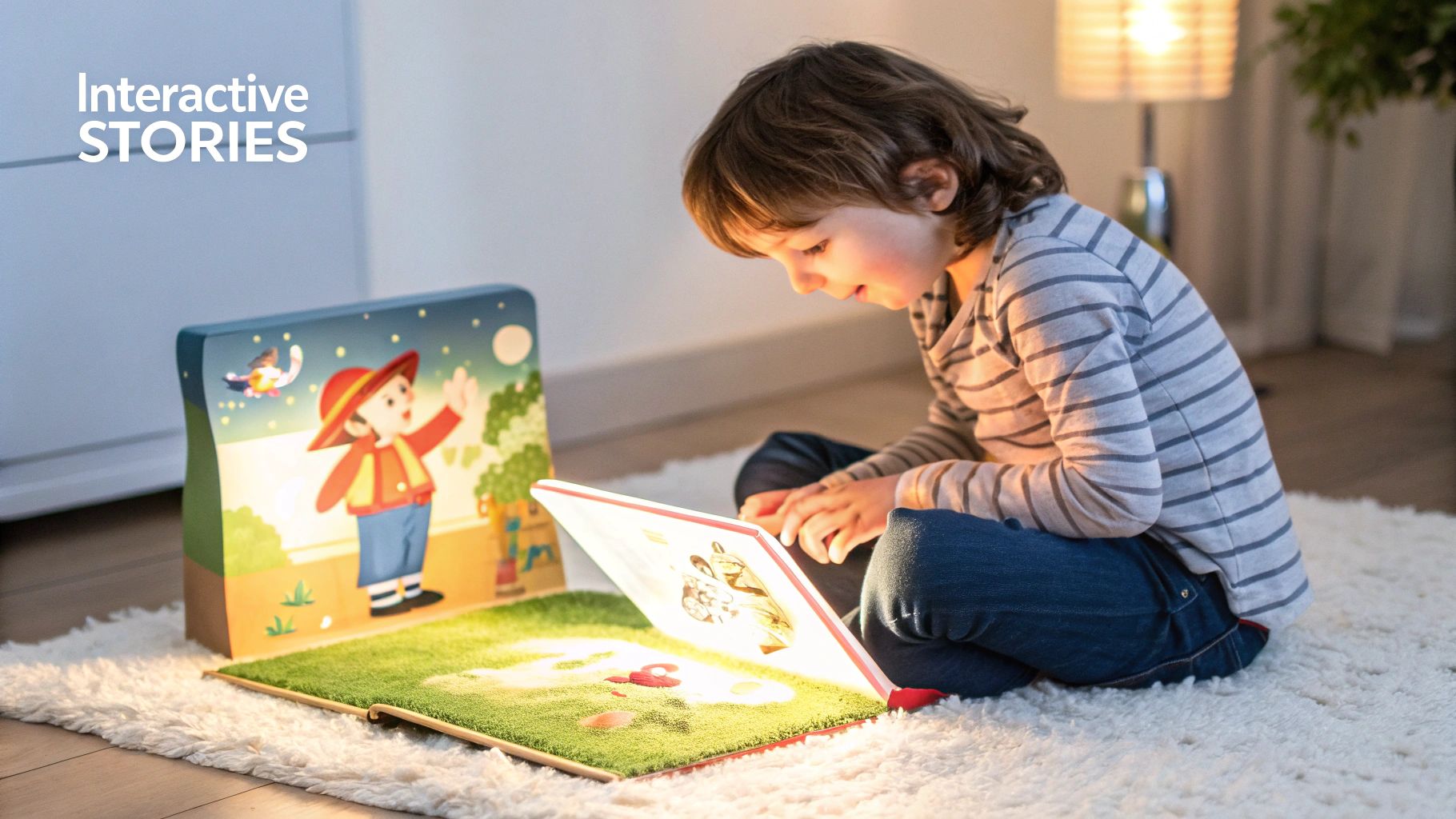
This is where the magic of interactive storytelling comes in, and it’s an absolute game-changer for developing empathy, problem-solving skills, and resilience. When a child gets to decide whether a character shares their last berry or bravely faces a shadowy cave, they're practicing real-life skills in a safe, imaginative space.
This is exactly where tools like the Lunesia app shine. Instead of passive screen time, it offers vibrant adventures where every choice matters. Your child isn't just watching a story unfold; they become the hero who learns kindness by helping a lost star find its way home.
More Than a Story—It’s a Skill-Building Playground
How do you teach a five-year-old about courage when they're scared of the dark? Or explain empathy to a toddler who just snatched a toy from their friend? We all know that lecturing rarely works. But letting them experience these situations through a character’s eyes? That’s where real learning happens.
In a Lunesia adventure, your child might guide a timid squirrel to share its nuts or help a grumpy giant learn how to make friends. They are making decisions that directly impact the story's outcome, connecting their choices to consequences in a gentle, memorable way. These aren't just bedtime tales; they are powerful practice sessions for real-life emotions and challenges.
This approach turns learning into an exciting game where kids are naturally motivated. The research backs this up, showing that challenge-based gamification can increase student performance by up to 34.75%. It's clear that making learning fun works—data shows that a staggering 90% of gamified courses are completed, compared to just 25% for traditional ones.
When a story asks, “What should Leo the Lion do next?” your child isn't just choosing a path. They are practicing critical thinking, weighing options, and building the confidence to make decisions—skills that will serve them for a lifetime.
From Screen Time Guilt to Quality Time Gained
Let’s be honest about a major source of parental stress: screen time. We all need a moment to ourselves, but the guilt that comes with plopping our kids in front of a screen can be overwhelming. What if you could flip the script on that feeling?
When your child is deeply immersed in a Lunesia adventure, you're not just buying a few minutes of peace. You're giving them a safe, completely ad-free environment where they are actively learning and growing.
You get that precious, much-needed time for yourself, feeling good knowing your child is engaged in something truly constructive. They aren’t just being entertained; they are building empathy, courage, and problem-solving skills. The benefits of interactive storytelling for preschoolers are immense, turning what could be passive viewing into an active journey of development.
Creating these compelling worlds requires a deep understanding of the foundational creative design principles that make stories so engaging for young minds. Lunesia handles all of that for you, crafting each tale to be a value-rich journey that feels like pure fun. It's the ultimate win-win for modern family life.
Build Emotional Resilience Through Play
Have you ever watched your child's face crumple in frustration over a puzzle piece that just won't fit? Those big feelings can be so overwhelming for little people. How do you teach them to handle disappointment without a full-blown meltdown?
The answer isn't a lecture. It's practice. But where can they safely practice something so complex?
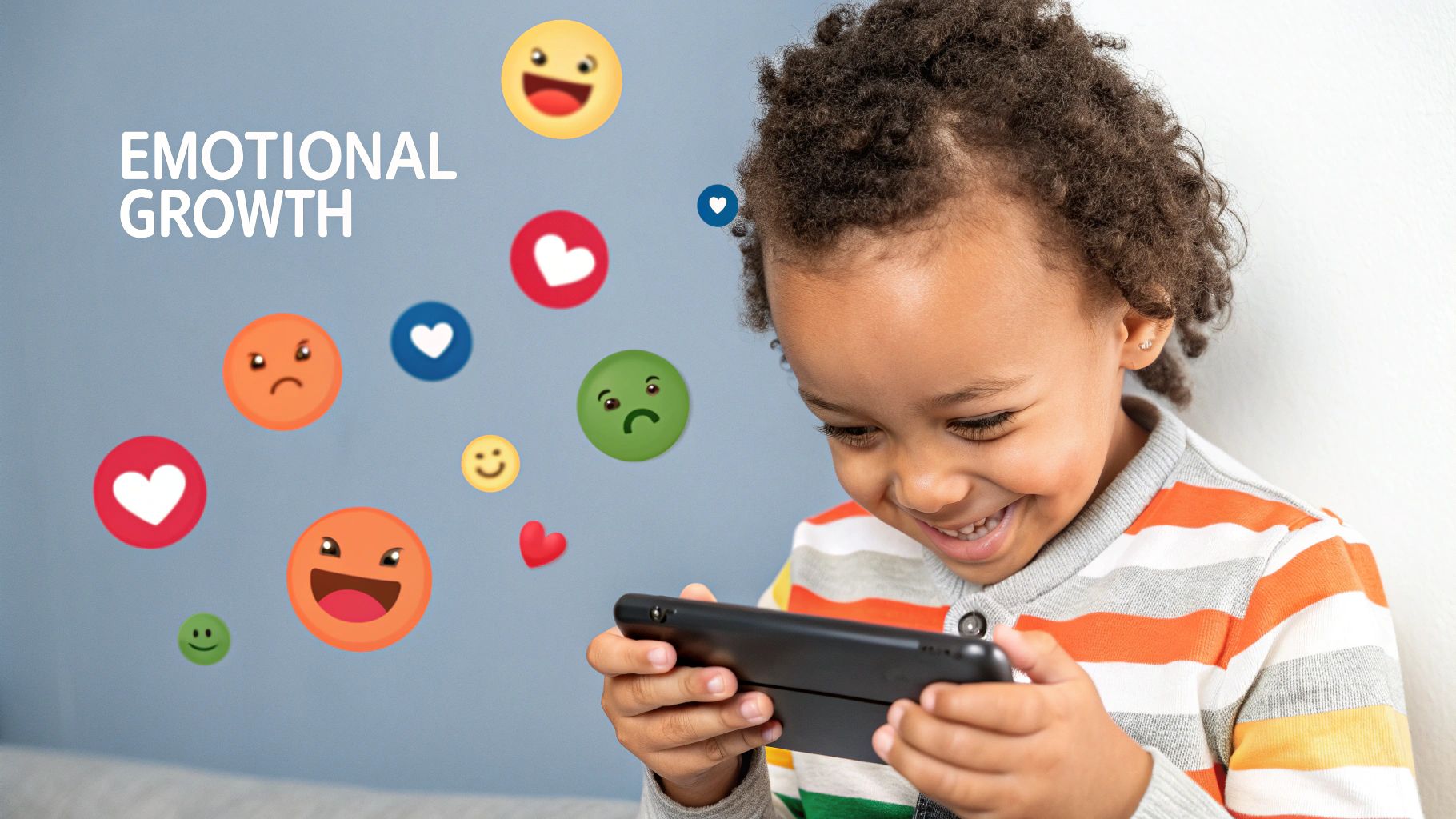
Welcome to the ‘emotional playground’ created by interactive stories. This is a unique space where kids can explore complicated feelings like disappointment, shyness, or fear in a totally safe environment. It’s a world where they can try, fail, and try again without any real-world consequences.
This isn't just a trend; it's a powerful educational strategy. The gamification market in education is projected to soar from around $3 billion to over $40 billion by 2035, with K-12 learning making up nearly half of that. This massive shift shows a clear understanding of how playful challenges truly motivate young learners. You can dig into the specifics in the full gamification market report.
Turning "I Can't" into "Let Me Try"
So, what does this look like in real life? Imagine your child is playing a Lunesia story where they have to help a character—a shy little fox—ask other animals for help to find his way home. When your child chooses the brave option for the fox, they're doing so much more than just tapping a screen. They're actually internalizing a strategy for their own life.
They're practicing what it feels like to be brave. They are learning that asking for help is a sign of strength, not weakness. This emotional rehearsal is simply invaluable.
Here’s how playful learning directly tackles some of the most common challenges parents face:
- Tantrums & Frustration: Instead of telling them to "calm down," let them play a story where a character gets frustrated building a tower and learns to take a deep breath before trying again. They see the strategy in action.
- Anxiety & Fears: A child who is scared of the dark can help a little firefly find its glow in a spooky cave, turning something scary into an exciting challenge.
- Building Confidence: Every single successful choice in an interactive story is a small win. These little victories stack up, building self-esteem and reinforcing the idea that they are capable and smart.
A Safe Space for Big Emotions
These playful scenarios give children a vocabulary for their feelings. When a character in a story says, "I feel worried," it gives your child the words to express their own anxiety. It normalizes these big emotions and shows them that everyone feels this way sometimes.
In a Lunesia story, a child might help a character apologize after making a mistake. This teaches them about accountability and forgiveness—not as abstract concepts, but as concrete actions they can see and choose. That's what makes the lesson stick.
This kind of learning helps them build a whole toolkit of emotional responses. You can find even more ways to build these essential skills in our guide on emotional intelligence activities for kids.
And here's the best part for you: while your child is immersed in these meaningful adventures—learning to be kind, brave, and resilient—you get a moment. It's that guilt-free pause every parent needs, knowing your child is safe, happy, and engaged in something truly beneficial. It’s a win-win that makes family life just a little bit easier.
Reclaim Your Time Without the Guilt
Let's be honest for a second: you need a break. We all do. But that wave of guilt that washes over you when you hand over a screen just to get that break… it can feel crushing, can't it?
What if you could take back those precious minutes, not with a sigh of defeat, but with total confidence?
That’s the incredible, unspoken perk of making learning fun. When your child is completely absorbed in a high-quality educational game or an interactive story, you’re not just 'parking' them in front of a screen. You're opening a door to a safe, ad-free world where they are actively building skills that truly matter.
From Passive Watching to Active Doing
There's a massive difference between a child zoned out watching a cartoon and one who is actively making decisions within a story. One is simple consumption; the other is creation, problem-solving, and critical thinking.
When an app like Lunesia prompts your child to help a character solve a puzzle or choose a kind way to respond, their brain is firing on all cylinders. This is where well-designed educational tools really shine—they turn screen time from a mindless distraction into a meaningful adventure.
The right kind of engagement makes all the difference. While tossing in game-like features can boost a learner's engagement by up to 150%, quality is king. It's the reason over 70% of gamification projects ultimately fizzle out, according to insights from gamification in education statistics.
Lunesia isn't a digital babysitter; it’s an active learning partner. It’s built to make sure your child’s screen time is genuinely valuable, helping them build empathy, courage, and problem-solving skills, one story at a time.
How to Use That Guilt-Free Time Like a Pro
So, what do you do with this newfound freedom? It’s not just about getting chores done (though that’s definitely a win!). It’s about recharging your own batteries so you can be the present, patient parent you want to be.
Here are a few ways I make the most of those moments:
- The Five-Minute Reset: Just sit. Have a cup of coffee and simply breathe. No scrolling, no tidying up. That small pause can reset your entire nervous system.
- Tackle One Tiny Thing: Unload the dishwasher. Answer that one email you've been putting off. Accomplishing a small, concrete task delivers a huge mental boost.
- Connect with Another Adult: Shoot a quick text to a friend or your partner. A moment of adult connection can make you feel less isolated in the whirlwind of parenting.
When you know your child is safe, happy, and learning something constructive, you can finally let the guilt go. You're not taking anything away from them. You're giving them a chance for independent, joyful discovery while you take a much-needed moment for yourself. And that balance? It's the secret to a happier, more harmonious family life for everyone.
Your Top Questions About Playful Learning, Answered
Jumping into the world of playful learning is exciting, but let's be real—it can bring up a whole lot of new questions. If you've ever found yourself wondering if you're "doing it right," you're not alone. I've been there. Let's tackle some of the most common worries I hear from parents and give you some clear, practical advice to help you feel confident.
How Much Fun Learning Screen Time Is Okay for a Young Child?
Have you ever found yourself anxiously watching the clock during your child's screen time? I think every parent has. But here's the secret: it's less about the quantity of time and much more about the quality of what they're doing.
Twenty minutes of passively watching a cartoon is worlds apart from twenty minutes of actively solving problems in an interactive story. The key is to think in terms of "active" versus "passive" screen time. When your child is making choices and their brain is firing on all cylinders, that's engagement. That's learning.
For little ones aged 2-5, experts usually suggest watching with them when you can and always choosing high-quality content. The goal is to use screens as a tool to connect and grow, not just as a babysitter. Apps like Lunesia are built specifically for this, making every moment of screen time meaningful and educational in a safe, ad-free space.
What If My Child Gets Frustrated When a Game Is Too Hard?
Ah, that moment when a fun activity suddenly turns into a full-blown meltdown. We've all been there. But what if I told you that flash of frustration is actually a critical part of learning? It’s a golden opportunity to teach resilience.
The trick is to step in as their "play partner" before the frustration boils over. Instead of jumping in to solve the problem for them, try asking some curious questions. Something like, "Hmm, that part looks tricky! What do you think would happen if we tried turning it this way?"
This simple shift shows your child that it's okay to struggle and that sticking with a problem is how you win. In Lunesia’s stories, the challenges are carefully designed to be age-appropriate—they encourage kids to keep trying without causing real distress. They get to practice navigating disappointment within the safety of a story, building skills they can pull from when their real-life block tower comes tumbling down.
How Can I Make Learning Fun Without Buying Expensive Toys?
This is my favorite part—you absolutely don’t need a big budget! The most powerful learning tools are already scattered around your home and, most importantly, inside your own imagination.
A simple cardboard box isn’t just trash; it’s a rocket ship blasting off to the moon. A pile of socks waiting to be folded becomes a fantastic color-matching game. A walk around the block is suddenly a nature scavenger hunt to find five different kinds of leaves.
The real magic is in creativity and connection. While a brilliantly designed app offers immense value by providing curated, expert-developed content, it’s meant to complement, not replace, these simple, everyday moments of discovery. Start with what you have, and you'll be amazed at the adventures you can create together.
Ready to transform screen time into a guilt-free, skill-building adventure? With Lunesia, your child becomes the hero of their own story, learning kindness, courage, and problem-solving through play. Start your free trial today and discover a world of interactive fun!
